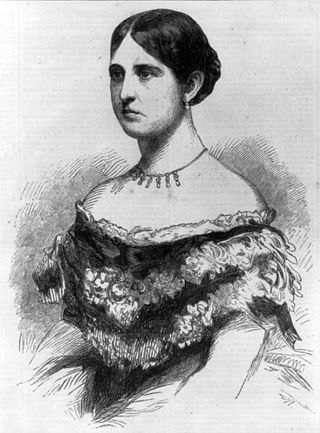| |||||
| Decades: | |||||
|---|---|---|---|---|---|
| See also: | |||||
Events from the year 1859 in the United States.
| |||||
| Decades: | |||||
|---|---|---|---|---|---|
| See also: | |||||
Events from the year 1859 in the United States.




Francis Scott Key was an American lawyer, author, and poet from Frederick, Maryland, best known as the author of the text of the American national anthem "The Star-Spangled Banner". Key observed the British bombardment of Fort McHenry in 1814 during the War of 1812. He was inspired upon seeing the American flag still flying over the fort at dawn and wrote the poem "Defence of Fort M'Henry"; it was published within a week with the suggested tune of the popular song "To Anacreon in Heaven". The song with Key's lyrics became known as "The Star-Spangled Banner" and slowly gained in popularity as an unofficial anthem, finally achieving official status as the national anthem more than a century later under President Herbert Hoover.
1859 (MDCCCLIX) was a common year starting on Saturday of the Gregorian calendar and a common year starting on Thursday of the Julian calendar, the 1859th year of the Common Era (CE) and Anno Domini (AD) designations, the 859th year of the 2nd millennium, the 59th year of the 19th century, and the 10th and last year of the 1850s decade. As of the start of 1859, the Gregorian calendar was 12 days ahead of the Julian calendar, which remained in localized use until 1923.

John Brown was a prominent leader in the American abolitionist movement in the decades preceding the Civil War. First reaching national prominence in the 1850s for his radical abolitionism and fighting in Bleeding Kansas, Brown was captured, tried, and executed by the Commonwealth of Virginia for a raid and incitement of a slave rebellion at Harpers Ferry in 1859.

Daniel Edgar Sickles was an American politician, soldier, and diplomat.

Henry Alexander Wise was an American attorney, diplomat, politician and slave owner from Virginia. As the 33rd Governor of Virginia, Wise served as a significant figure on the path to the American Civil War, becoming heavily involved in the 1859 trial of abolitionist John Brown. After leaving office in 1860, Wise also led the move toward Virginia's secession from the Union in reaction to the election of Abraham Lincoln and the Battle of Fort Sumter.

Philip Barton Key II was an American lawyer who served as U.S. Attorney for the District of Columbia. He is most famous for his public affair with Teresa Bagioli Sickles, and his eventual murder at the hands of her husband, Congressman Daniel Sickles of New York. Sickles defended himself by adopting a defense of temporary insanity, the first time the defense had been successfully used in the United States.
Events from the year 1823 in the United States.

Teresa Bagioli Sickles was the wife of Democratic New York State Assemblyman, U.S. Representative, and later U.S. Army Major General Daniel E. Sickles. She gained notoriety in 1859, when her husband murdered her lover, Philip Barton Key II, son of Francis Scott Key. At his trial, Sickles claimed for the first time in United States jurisprudence a defense by temporary insanity. He was acquitted.
Events from the year 1830 in the United States.

Events from the year 1831 in the United States.

Events from the year 1837 in the United States.
Events from the year 1800 in the United States.
Events from the year 1811 in the United States.
Events from the year 1815 in the United States. As news slowly spread of the Treaty of Ghent (1814) ending the War of 1812, battles between American and British forces continued in the early months of the year.
Events from the year 1821 in the United States.
Events from the year 1851 in the United States.
Events from the year 1852 in the United States.
Events from the year 1854 in the United States.
Events from the year 1855 in the United States.
Events from the year 1857 in the United States.